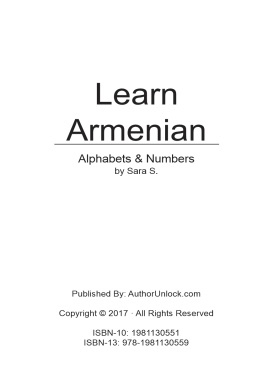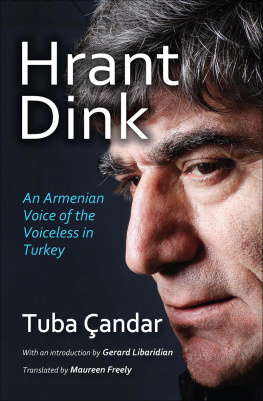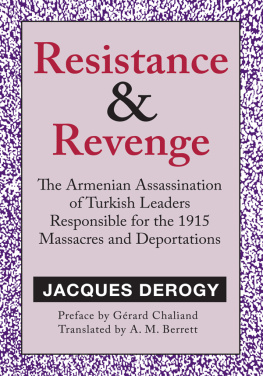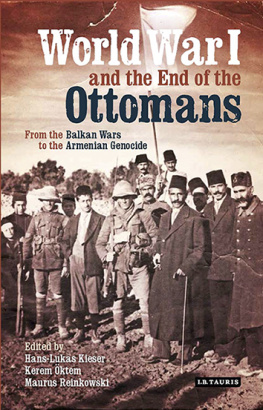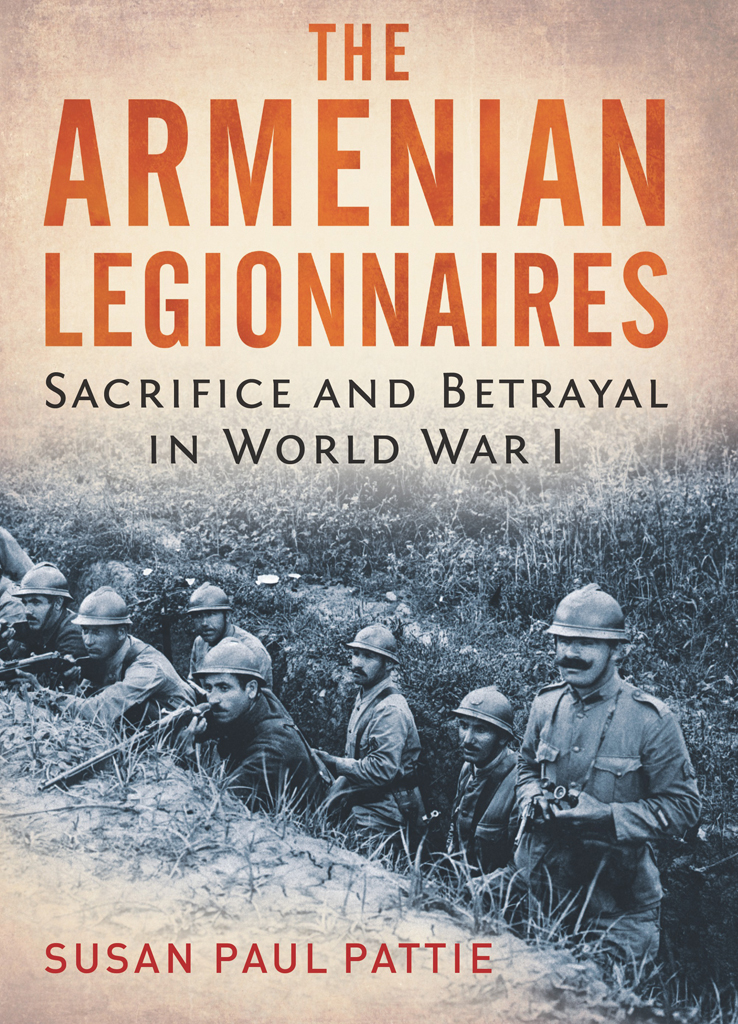Donald Bloxham, Richard Pares Professor of European History, University of Edinburgh
This book, written lucidly and meant for the general public as well as scholars, is based essentially on published and unpublished memoirs by certain key volunteers. Because substantial excerpts from those eyewitness accounts have been included in translation from Armenian to English, the study renders a most valuable service to the non-Armenian reader as well. What is more, the numerous illustrations and maps certainly pump additional oxygen into the faces, situations, and places that come to life. All in all, it is a timely reminder of the oft-forgotten Armenian contribution to the Allied victories in the Levant during World War I. It is also a tribute to the young men and some women who put their lives on the line for a higher cause.
Vahram L. Shemmassian, Professor and Director of the Armenian Studies Program, California State University, Northridge
This is a long-awaited book on the Armenian legion. The author has done a wonderful job by giving a voice to the main actors of this story, the legionnaires themselves, who through extracts from their memoirs make this book more vivid, concrete and comprehensible. The richness of the photographs of the legionnaires published in this book is also a very important contribution towards successfully reconstructing this crucial period of Armenian history.
Vah Tachjian, Project Director and Chief Editor of Houshamadyan Project and Lecturer at the Pter Pzmny Catholic University in Budapest

Early morning in Adana. American flag flying over Near East Relief building and below, workers going to the vineyards.
John Amar Shishmanian Papers, envelope B, Hoover Institution Archives.

Published in 2018 by
I.B.Tauris & Co. Ltd
London New York
www.ibtauris.com
Copyright 2018 Susan Paul Pattie
Copyright 2018 Varak Ketsemanian, Chapter 2
In collaboration with and sponsored by K. George and Carolann S. Najarian
The right of Susan Paul Pattie to be identified as the author of this work has been asserted by the author in accordance with the Copyright, Designs and Patents Act 1988.
All rights reserved. Except for brief quotations in a review, this book, or any part thereof, may not be reproduced, stored in or introduced into a retrieval system, or transmitted, in any form or by any means, electronic, mechanical, photocopying, recording or otherwise, without the prior written permission of the publisher.
Every attempt has been made to gain permission for the use of the images in this book. Any omissions will be rectified in future editions.
References to websites were correct at the time of writing.
ISBN: 978 1 78831 125 0
eISBN: 978 1 83860 929 0
ePDF: 978 1 83860 930 6
A full CIP record for this book is available from the British Library
A full CIP record is available from the Library of Congress
Library of Congress Catalog Card Number: available
Contents
K. George Najarian
Varak Ketsemanian
Marc Mamigonian
Gagik Stepan-Sarkissian
Vahe H. Apelian
A s a young boy growing up in Cambridge, Massachusetts, the Armenian legionnaires were a part of my life for as long as I can remember. Born in Hyusenig, an Armenian village in Ottoman Turkey, my father Nishan Najarian emigrated to the United States before the Armenian Genocide of 1915 and settled in Cambridge. Despite his comfort and safety in the United States, like hundreds of other young Armenian men, he answered the call to join the Armenian legionnaires. He was 19 years old. At the end of the war he returned home, bringing with him a woman and her daughter, survivors of the Genocide. We dont know where or how he met them. We do know that when he was being discharged from the legionnaires he was told he could stay in the region or get on a boat back to the United States and take one other person with him. He said he wished to return but insisted on taking a mother and a daughter and wouldnt leave without both of them. He obtained the necessary permission, brought them to the United States, and eventually married the daughter, Arshalous, my mother.
The legionnaires who returned became close, lifelong friends whom we would see regularly. I remember going along to the legionnaires picnics at Camp Hayastan in Franklin, Massachusetts, where the families gathered and the men would trade stories. A few times a year the legionnaires would get together and play cards and enjoy one anothers company. Similar groups gathered informally in various cities: Providence, Rhode Island; New Britain, Connecticut; Troy, New York; Worcester, Boston, Cambridge, Springfield, Lawrence, Massachusetts. When talking to non-Armenians about these young fighters, we would use the word legionnaires but in general conversation amongst Armenians they were known as the Gamavors, the Volunteers. These men fascinated me and inspired me: young men who willingly put their lives at risk to go back to their homeland and fight, who were committed to help free Armenia and rescue those in need.
This book is dedicated to the Gamavors, the Armenian legionnaires, the men whose idealism and courage fired their determination as represented in the spirit of my father, Nishan Najarian.
K. George Najarian

1. Upon discharge from the Legion, Nishan Najarian (right) returned to Massachusetts, bringing with him a mother and daughter, survivors of the Genocide. He later married Arshalous (center) and they raised four children together.
T he author and sponsors have many people to thank for their contributions to this book. We are especially grateful to Baikar Press, Kevork Marashlian and Aram Arkun for granting permission to translate and use portions of Dickran Boyajians Haygagan Lekeone [The Armenian Legion]. This lively book itself includes many perspectives from different legionnaires as Boyajian combines his own memoirs and research with the words written by his many comrades. Boyajians book is the foundation of this one. Dr. Gagik Stepan-Sarkissian has done a meticulous job of translating these passages as well as others used for this book. For this, and equally, for his wise advice, constantly sought, we are very thankful.


